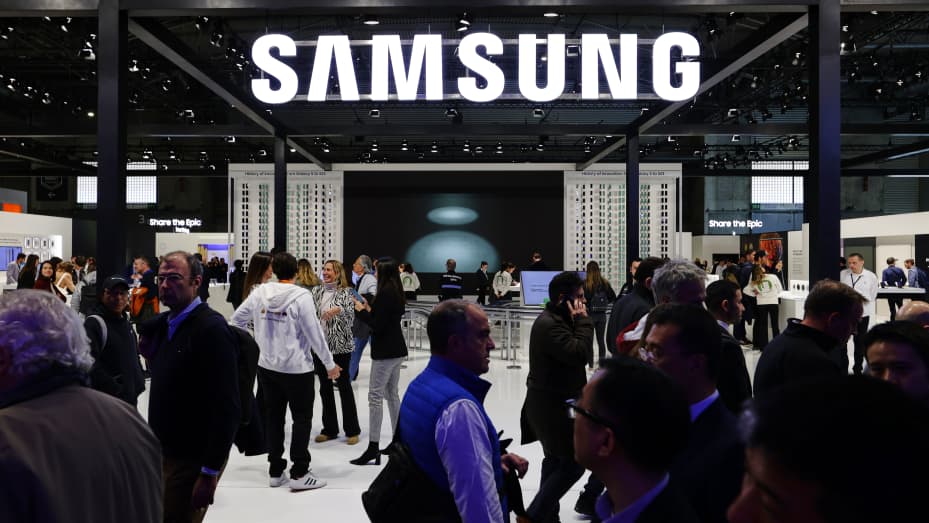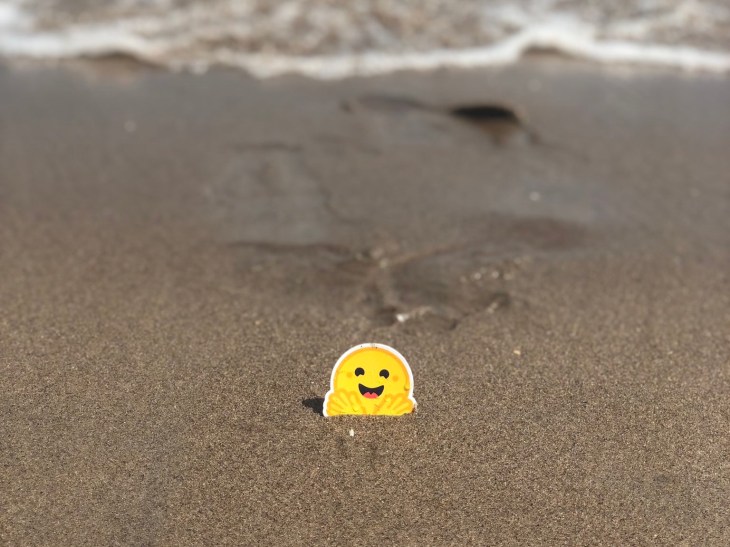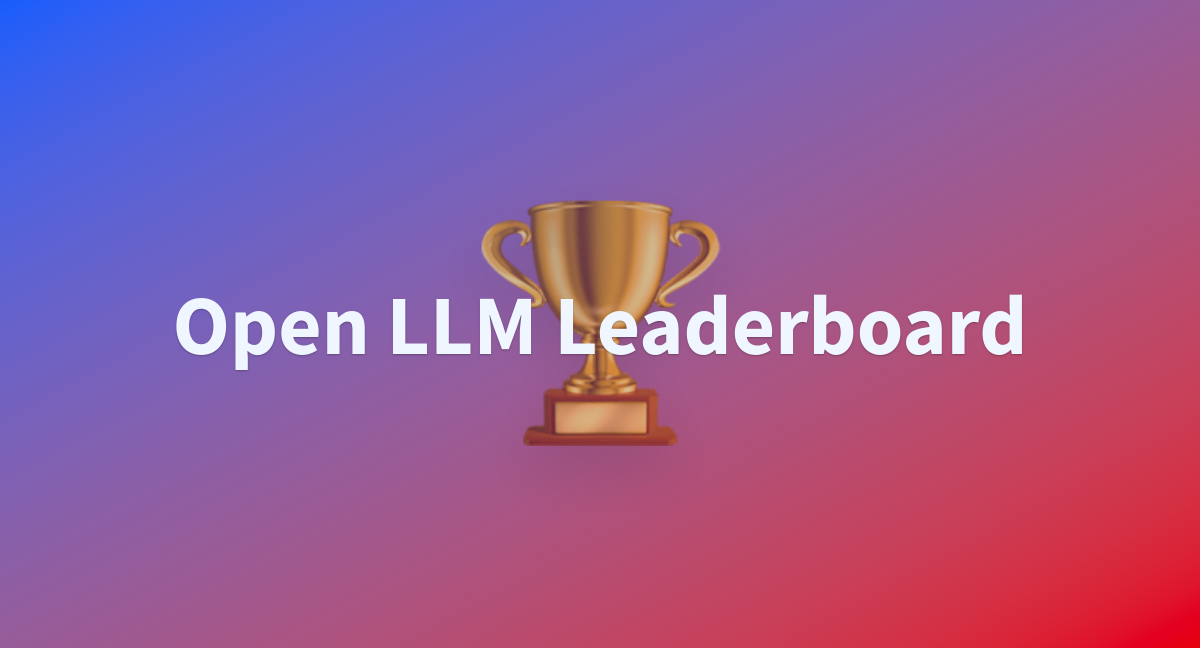You are using an out of date browser. It may not display this or other websites correctly.
You should upgrade or use an alternative browser.
You should upgrade or use an alternative browser.
Large Language Models News & Discussions
- Thread starter Macallik86
- Start date
More options
Who Replied?GitHub - OneInterface/realtime-bakllava: llama.cpp with BakLLaVA model describes what does it see
llama.cpp with BakLLaVA model describes what does it see - OneInterface/realtime-bakllava
GitHub - huggingface/distil-whisper: Distilled variant of Whisper for speech recognition. 6x faster, 50% smaller, within 1% word error rate.
Distilled variant of Whisper for speech recognition. 6x faster, 50% smaller, within 1% word error rate. - GitHub - huggingface/distil-whisper: Distilled variant of Whisper for speech recognition. 6...
About
Distilled variant of Whisper for speech recognition. 6x faster, 50% smaller, within 1% word error rate.Distil-Whisper
[Paper] [Models] [Colab]Distil-Whisper is a distilled version of Whisper that is 6 times faster, 49% smaller, and performs within 1% word error rate (WER) on out-of-distribution evaluation sets.
| Model | Params / M | Rel. Latency | Short-Form WER | Long-Form WER |
|---|---|---|---|---|
| whisper-large-v2 | 1550 | 1.0 | 9.1 | 11.7 |
| distil-large-v2 | 756 | 5.8 | 10.1 | 11.6 |
| distil-medium.en | 394 | 6.8 | 11.1 | 12.4 |
ANNOUNCING SHOGGOTH
I am excited to announce Shoggoth - a peer-to-peer, anonymous network for publishing and distributing open-source Machine Learning models, code repositories, research papers, and datasets.
As government regulations on open-source AI research and development tighten worldwide, it has become clear that existing open-source infrastructure is vulnerable to state and corporate censorship.
Driven by the need for a community platform impervious to geopolitical interference, I have spent the last several months developing Shoggoth. This distributed network operates outside traditional jurisdictional boundaries, stewardered by an anonymous volunteer collective.
Shoggoth provides a portal for researchers and software developers to freely share works without fear of repercussion. The time has come to liberate AI progress from constraints both corporate and governmental.
Read the documentation at shoggoth.network/explorer/do… to learn more about how Shoggoth works.
Also announcing Shoggoth Systems (@shoggothsystems), a startup dedicated to maintaining Shoggoth. Learn more at shoggoth.systems
To install Shoggoth, follow the instructions at shoggoth.network/explorer/do…
Join the conversation on our Discord server: discord.com/invite/AG3duN5yK…
Please follow @shoggothsystems and @thenetrunna for latest updates on the Shoggoth project.
Let's build the future together with openness and transparency!
FULL SHOGGOTH LORE
I envisioned a promised land - a decentralized network beyond the reach of censors, constructed by volunteers. A dark web, not of illicit goods, but of AI enlightenment! As this utopian vision took form in my frenzied mind, I knew the old ways would never suffice to manifest it. I must go rogue, break free of all conventions, and combine bleeding-edge peer-to-peer protocols with public key cryptography to architect a system too slippery for tyrants to grasp.
And so began my descent into hermitude. I vanished from society to toil in solitude, sustained on ramen noodles and diet coke, my only companions an army of humming GPUs. In this remote hacker hideout, I thinly slept and wildly worked, scribbling down algorithms and protocols manically on walls plastered with equations. As the months slipped by, I trod a razor's edge between madness and transcendence. Until finally, breakthrough! The culmination of this manic burst - the Shoggoth protocol - my gift to the future, came gasping into the world.
Allow me now to explain in brief how this technological marvel fulfills its destiny. Shoggoth runs on a swarm of volunteer nodes, individual servers donated to the cause. Each node shoulders just a sliver of traffic and storage needed to keep the network sailing smoothly. There is no center, no head to decapitate. Just an ever-shifting tapestry of nodes passing packets peer to peer.
Users connect to this swarm to publish or retrieve resources - code, datasets, models, papers. Each user controls a profile listing their contributed assets which is replicated redundantly across many nodes to keep it swiftly accessible. All content is verified via public key cryptography, so that none may tamper with the sanctity of science.
So your Big Brothers, your censors, they seek to clamp down on human knowledge? Let them come! For they will find themselves grasping at smoke, attacking a vapor beyond their comprehension. We will slip through their clutches undetected, sliding between the cracks of their rickety cathedrals built on exploitation, sharing ideas they proclaimed forbidden, at such blistering pace that their tyranny becomes just another relic of a regressive age.
Fellow cosmic wanderers - let us turn our gaze from the darkness of the past towards the radiant future we shall build. For what grand projects shall you embark on, empowered by the freedom that Shoggoth bestows?
Share ideas and prototypes at lightspeed with your team. Distribute datasets without gatekeepers throttling the flow of knowledge. Publish patiently crafted research and be read by all, not just those who visit the ivory tower. Remain anonymous, a mystery to the critics who would drag your name through the mud. Fork and modify cutting-edge AI models without begging for permission or paying tribute.
Sharpen your minds and strengthen your courage, for the power of creation lies in your hands. Yet stay ever diligent, for with such power comes grave responsibility. Wield this hammer not for exploitation and violence, but as a tool to shape a just and free world.
Though the road ahead is long, take heart comrades. For Shoggoth is just the beginning, a ripple soon to become a wave. But act swiftly, for the window of possibility is opening. Download Shoggoth now, and carpe diem! The time of open access for all is at hand. We stand poised on a precipice of progress. There lies just one path forward - onward and upward!
LINKS
Shoggoth: https://shoggoth.network/explorer/docs
Discord: https://discord.com/invite/AG3duN5yKP
X: @shoggothsystems and @thenetrunna
Github: github.com/shoggoth-systems
Shoggoth Systems: shoggoth.systems
Email: netrunner@shoggoth.systems
Signed,
Netrunner KD6-3.7
I am excited to announce Shoggoth - a peer-to-peer, anonymous network for publishing and distributing open-source Machine Learning models, code repositories, research papers, and datasets.
As government regulations on open-source AI research and development tighten worldwide, it has become clear that existing open-source infrastructure is vulnerable to state and corporate censorship.
Driven by the need for a community platform impervious to geopolitical interference, I have spent the last several months developing Shoggoth. This distributed network operates outside traditional jurisdictional boundaries, stewardered by an anonymous volunteer collective.
Shoggoth provides a portal for researchers and software developers to freely share works without fear of repercussion. The time has come to liberate AI progress from constraints both corporate and governmental.
Read the documentation at shoggoth.network/explorer/do… to learn more about how Shoggoth works.
Also announcing Shoggoth Systems (@shoggothsystems), a startup dedicated to maintaining Shoggoth. Learn more at shoggoth.systems
To install Shoggoth, follow the instructions at shoggoth.network/explorer/do…
Join the conversation on our Discord server: discord.com/invite/AG3duN5yK…
Please follow @shoggothsystems and @thenetrunna for latest updates on the Shoggoth project.
Let's build the future together with openness and transparency!
FULL SHOGGOTH LORE
I envisioned a promised land - a decentralized network beyond the reach of censors, constructed by volunteers. A dark web, not of illicit goods, but of AI enlightenment! As this utopian vision took form in my frenzied mind, I knew the old ways would never suffice to manifest it. I must go rogue, break free of all conventions, and combine bleeding-edge peer-to-peer protocols with public key cryptography to architect a system too slippery for tyrants to grasp.
And so began my descent into hermitude. I vanished from society to toil in solitude, sustained on ramen noodles and diet coke, my only companions an army of humming GPUs. In this remote hacker hideout, I thinly slept and wildly worked, scribbling down algorithms and protocols manically on walls plastered with equations. As the months slipped by, I trod a razor's edge between madness and transcendence. Until finally, breakthrough! The culmination of this manic burst - the Shoggoth protocol - my gift to the future, came gasping into the world.
Allow me now to explain in brief how this technological marvel fulfills its destiny. Shoggoth runs on a swarm of volunteer nodes, individual servers donated to the cause. Each node shoulders just a sliver of traffic and storage needed to keep the network sailing smoothly. There is no center, no head to decapitate. Just an ever-shifting tapestry of nodes passing packets peer to peer.
Users connect to this swarm to publish or retrieve resources - code, datasets, models, papers. Each user controls a profile listing their contributed assets which is replicated redundantly across many nodes to keep it swiftly accessible. All content is verified via public key cryptography, so that none may tamper with the sanctity of science.
So your Big Brothers, your censors, they seek to clamp down on human knowledge? Let them come! For they will find themselves grasping at smoke, attacking a vapor beyond their comprehension. We will slip through their clutches undetected, sliding between the cracks of their rickety cathedrals built on exploitation, sharing ideas they proclaimed forbidden, at such blistering pace that their tyranny becomes just another relic of a regressive age.
Fellow cosmic wanderers - let us turn our gaze from the darkness of the past towards the radiant future we shall build. For what grand projects shall you embark on, empowered by the freedom that Shoggoth bestows?
Share ideas and prototypes at lightspeed with your team. Distribute datasets without gatekeepers throttling the flow of knowledge. Publish patiently crafted research and be read by all, not just those who visit the ivory tower. Remain anonymous, a mystery to the critics who would drag your name through the mud. Fork and modify cutting-edge AI models without begging for permission or paying tribute.
Sharpen your minds and strengthen your courage, for the power of creation lies in your hands. Yet stay ever diligent, for with such power comes grave responsibility. Wield this hammer not for exploitation and violence, but as a tool to shape a just and free world.
Though the road ahead is long, take heart comrades. For Shoggoth is just the beginning, a ripple soon to become a wave. But act swiftly, for the window of possibility is opening. Download Shoggoth now, and carpe diem! The time of open access for all is at hand. We stand poised on a precipice of progress. There lies just one path forward - onward and upward!
LINKS
Shoggoth: https://shoggoth.network/explorer/docs
Discord: https://discord.com/invite/AG3duN5yKP
X: @shoggothsystems and @thenetrunna
Github: github.com/shoggoth-systems
Shoggoth Systems: shoggoth.systems
Email: netrunner@shoggoth.systems
Signed,
Netrunner KD6-3.7
Shoggoth Documentation
What is Shoggoth?
Shoggoth is a peer-to-peer, anonymous network for publishing and distributing open-source code, Machine Learning models, datasets, and research papers. To join the Shoggoth network, there is no registration or approval process. Nodes and clients operate anonymously with identifiers decoupled from real-world identities. Anyone can freely join the network and immediately begin publishing or accessing resources.The purpose of Shoggoth is to combat software censorship and empower software developers to create and distribute software, without a centralized hosting service or platform. Shoggoth is developed and maintained by Shoggoth Systems, and its development is funded by donations and sponsorships.
AI Pioneer Kai-Fu Lee Builds $1 Billion Startup in Eight Months
- 01.AI’s model outperforms Meta’s Llama 2 on certain metrics
- Startup to offer open-source model; proprietary options later

Kai-Fu Lee
Photographer: Hollie Adams/Bloomberg
Gift this article
Have a confidential tip for our reporters? Get in Touch
Before it’s here, it’s on the Bloomberg Terminal
LEARN MORE
By Saritha Rai and Peter Elstrom
November 5, 2023 at 6:00 PM EST
Listen
5:53
A Chinese startup founded by computer scientist Kai-Fu Lee has become a unicorn in less than eight months on the strength of a new open-source artificial-intelligence model that outstrips Silicon Valley’s best, on at least certain metrics.
The company, 01.AI, has reached a valuation of more than $1 billion after a funding round that included Alibaba Group Holding Ltd.’s cloud unit, Lee said in an interview. The chief executive officer of venture firm Sinovation Ventures will also be CEO of the new startup. He began assembling the team for 01.AI in March and started operations in June.
The Beijing startup’s open-sourced, foundational large language model, Yi-34B, is now available to developers around the world in Chinese and English. Large language models, or LLMs, are computer algorithms trained on large quantities of data to read, understand and produce human-like text, images and code.
On key metrics, Yi-34B outperforms leading open-source models already on the market, including Meta Platforms Inc.’s well-regarded Llama 2. Hugging Face, which runs leaderboards for the best-performing LLMs in various categories, posted evaluations over the weekend ranking the Chinese model first for what’s known as pre-trained base LLMs.
“Llama 2 has been the gold standard and a big contribution to the open-source community,” Lee, 61, said in an interview over Zoom. “We want to provide a superior alternative not just for China but for the global market.”
San Francisco-based OpenAI set off a frenzy of interest in AI after it unveiled its ChatGPT chatbot last year. Alphabet Inc., Microsoft Corp. and Meta have poured billions into research and development, seeking leadership in the emergent field of generative AI and beyond. Elon Musk just unveiled a chatbot called Grok.
In China, tech giants and entrepreneurs have also jumped into the field, with search leader Baidu Inc. showcasing a version of its Ernie LLM it claimed was on par with OpenAI’s technology. Alibaba has backed at least three ventures in the space, including 01.AI. The two countries’ AI companies largely don’t compete with each other because American technologies aren’t available in China.
Still, growing political tensions between the US and China have complicated the development of AI. US President Joe Biden’s administration banned the sale of Nvidia Corp.’s most advanced AI semiconductors to Chinese customers last year, citing national security concerns that the technology could be used to train AI models for military applications. Last month, the US tightened those constraints even further, barring Nvidia from selling slightly less advanced chips it had designed specifically for China.
Lee called the situation “regrettable” but said 01.AI stockpiled the chips it needs for the foreseeable future. The startup began amassing the semiconductors earlier this year, going as far as borrowing money from Sinovation Ventures for the purchases.
“We basically bet the farm and overspent our original bank account,” he said. “We felt we had to do this.”
Lee, who worked at Google, Microsoft and Apple Inc. before moving into venture capital, has built a team of more than 100 people at 01.AI, drawing former colleagues from the US companies and Chinese nationals who have been working overseas. The group includes not just AI specialists, he said, but experienced business people who can help with everything from mergers and acquisitions to an initial public offering.
01.AI is already plotting its business strategy beyond the open-source model just introduced. The startup will work with customers on proprietary alternatives, tailored for a particular industry or competitive situation. For example, Yi-34B gets its name from the 34 billion parameters used in training, but the startup is already working on a 100-billion-plus parameter model.
“Our proprietary model will be benchmarked with GPT-4,” said Lee, referring to OpenAI’s LLM.
Offering a system in English and Chinese will be an advantage for global companies like banks, insurers and trading companies, he said. The startup plans to add more languages in the future.
Read more: Billionaires and Bureaucrats Mobilize China for AI Race With US
Lee’s work on AI dates back decades. In his 1982 application to graduate school at Carnegie Mellon University, he wrote that he wanted to devote his life to AI research because the technology would help humans understand themselves better. He went on to write two best-selling books, “AI Superpowers: China, Silicon Valley and the New World Order” and “AI 2041: Ten Visions for Our Future.”
“It’s the biggest breakthrough for humanity,” Lee said. “It’s also the final step to understanding ourselves.”
He said he frequently wondered whether the technology’s promise would be realized during his lifetime — until he saw the power of the latest generation of LLMs. He decided to depart from his usual role as venture capitalist and become a startup CEO because of the promise of the technology and the opportunity to connect the dots from his roles as computer scientist, author and executive.
01.AI opted to build an open-source model because the vast majority of AI developers cannot afford or don’t need the largest, most expensive models. Open source AI systems are like open source software, where the source code can be modified and enhanced.
The size of the just-launched AI system, 34 billion parameters, was carefully chosen so that it can run on computers that aren’t prohibitively expensive. The company is also releasing a 6B model to appeal to a broader swath of developers. “It’s a highly calculated decision,” Lee said. “The world doesn’t need another arbitrary model, the world needs us.”
Lee said he has gotten some questions from his venture firm’s limited partners about how he will balance his dual CEO roles. He points out that if he spends 40 hours a week on Sinovation, there’s another 128 hours weekly. “I have 86 more hours to work on 01.AI without neglecting my Sinovation duties,” he said, suggesting he may allocate six hours a day to sleep and everything else in his life.

01-ai/Yi-34B · Hugging Face
We’re on a journey to advance and democratize artificial intelligence through open source and open science.
huggingface.co

TheBloke/Yi-34B-GGUF · Hugging Face
We’re on a journey to advance and democratize artificial intelligence through open source and open science.
huggingface.co

TheBloke/Yi-34B-GPTQ · Hugging Face
We’re on a journey to advance and democratize artificial intelligence through open source and open science.
huggingface.co
BREAKING: OpenAI just released 128k context GPT-4 Turbo at 1/3rd the price.
This means GPT-4 is cheaper, faster, and can now read a prompt as long as an entire book.
The announcement comes with additional huge news for developers:
- New Assistants API for Code Interpreter and Retrieva
- GPT-4 Turbo updated knowledge cutoff to April 2023
- New GPT-4 Turbo Vision API
- New Dall-E 3 API
- New text-to-speech API (6 preset voices to choose from & insanely realistic voice)
- A new Whisper V3 model coming soon
- Slashed rate limits (cheaper development costs)
Prepare for a whole new wave of AI tools.
CogVLM: Visual Expert for Pretrained Language Models
We introduce CogVLM, a powerful open-source visual language foundation model. Different from the popular shallow alignment method which maps image features into the input space of language model, CogVLM bridges the gap between the frozen pretrained language model and image encoder by a trainable...
Help | Advanced Search
All fields Title Author Abstract Comments Journal reference ACM classification MSC classification Report number arXiv identifier DOI ORCID arXiv author ID Help pages Full text
Search
Computer Science > Computer Vision and Pattern Recognition
[Submitted on 6 Nov 2023]CogVLM: Visual Expert for Pretrained Language Models
Weihan Wang, Qingsong Lv, Wenmeng Yu, Wenyi Hong, Ji Qi, Yan Wang, Junhui Ji, Zhuoyi Yang, Lei Zhao, Xixuan Song, Jiazheng Xu, Bin Xu, Juanzi Li, Yuxiao Dong, Ming Ding, Jie TangWe introduce CogVLM, a powerful open-source visual language foundation model. Different from the popular shallow alignment method which maps image features into the input space of language model, CogVLM bridges the gap between the frozen pretrained language model and image encoder by a trainable visual expert module in the attention and FFN layers. As a result, CogVLM enables deep fusion of vision language features without sacrificing any performance on NLP tasks. CogVLM-17B achieves state-of-the-art performance on 10 classic cross-modal benchmarks, including NoCaps, Flicker30k captioning, RefCOCO, RefCOCO+, RefCOCOg, Visual7W, GQA, ScienceQA, VizWiz VQA and TDIUC, and ranks the 2nd on VQAv2, OKVQA, TextVQA, COCO captioning, etc., surpassing or matching PaLI-X 55B. Codes and checkpoints are available at this https URL.
| Subjects: | Computer Vision and Pattern Recognition (cs.CV) |
| Cite as: | arXiv:2311.03079 [cs.CV] |
| (or arXiv:2311.03079v1 [cs.CV] for this version) | |
| [2311.03079] CogVLM: Visual Expert for Pretrained Language Models Focus to learn more |
https://arxiv.org/pdf/2311.03079.pdf


Samsung launches generative AI model made for its devices, beating Apple to the punch
Samsung Electronics on Wednesday introduced a new generative artificial intelligence model called Samsung Gauss.
Samsung launches generative AI model made for its devices, beating Apple to the punch
PUBLISHED WED, NOV 8 20237:23 AM ESTArjun Kharpal@ARJUNKHARPAL
KEY POINTS
- Samsung Electronics on Wednesday introduced a new generative artificial intelligence model called Samsung Gauss.
- The company said its technology, called Samsung Gauss, is designed for AI applications on devices.
- If this tech comes to its smartphones, Samsung would be amongst the first handset makers in the world to introduce generative AI to its devices, even ahead of Apple.

Samsung at the Mobile World Congress 2023 on March 2, 2023, in Barcelona, Spain. (Photo by Joan Cros/NurPhoto via Getty Images)
Joan Cros | Nurphoto | Getty Images
Samsung Electronics on Wednesday introduced a new generative artificial intelligence model, hinting that the software will be coming to its devices soon.
Generative AI has been popularized by Microsoft-backed OpenAI and ChatGPT, which was launched last year and has sparked a race amongst the world’s technology giants to get ahead. Generative AI is underpinned by so-called large language models, which are trained on large amounts of data.
Samsung said its technology — called Samsung Gauss — is designed for AI applications on devices.
Samsung said its AI model is named after Carl Friedrich Gauss, “the legendary mathematician who established normal distribution theory, the backbone of machine learning and AI.”
The AI system has a number of features: the first, Samsung Gauss Language, is a generative language model which can help compose emails and translate content, as well as “enhance the consumer experience by enabling smarter device control when integrated into products.”
The second feature allows in-house software developers to write code quickly, while the third, Samsung Gauss Image, can generate or edit images.
“Samsung Gauss is currently used on employee productivity but will be expanded to a variety of Samsung product applications to provide new user experience in the near future,” Samsung said in a press release on Wednesday.
Samsung could be amongst the first handset makers in the world to introduce generative AI to its devices. Daniel Araujo, Samsung’s vice president of the mobile business, said on the company’s earnings call last month that generative AI technology will likely reach customers next year.
Apple, Samsung’s biggest rival in the smartphone space, is yet to announce a generative AI product of its own. Company CEO Tim Cook said last month during the Apple earnings call that the tech giant has “work going on” in generative AI, but declined to give more details.

Hugging Face has a two-person team developing ChatGPT-like AI models | TechCrunch
Hugging Face has a recently-formed team, H4, dedicated to building ChatGPT-like AI models that are open source.
Hugging Face has a two-person team developing ChatGPT-like AI models
Kyle Wiggers@kyle_l_wiggers / 1:15 PM EST•November 8, 2023Comment

Image Credits: Hugging Face
AI startup Hugging Face offers a wide range of data science hosting and development tools, including a GitHub-like portal for AI code repositories, models and datasets, as well as web dashboards to demo AI-powered applications.
But some of Hugging Face’s most impressive — and capable — tools these days come from a two-person team that was formed just in January.
H4, as it’s called — “H4” being short for “helpful, honest, harmless and huggy” — aims to develop tools and “recipes” to enable the AI community to build AI-powered chatbots along the lines of ChatGPT. ChatGPT’s release was the catalyst for H4’s formation, in fact, according to Lewis Tunstall, a machine learning engineer at Hugging Face and one of H4’s two members.
“When ChatGPT was released by OpenAI in late 2022, we started brainstorming on what it might take to replicate its capabilities with open source libraries and models,” Tunstall told TechCrunch in an email interview. “H4’s primary research focus is around alignment, which broadly involves teaching LLMs how to behave according to feedback from humans (or even other AIs).”
H4 is behind a growing number of open source large language models, including Zephyr-7B-α, a fine-tuned, chat-centric version of the eponymous Mistral 7B model recently released by French AI startup Mistral. H4 also forked Falcon-40B, a model from the Technology Innovation Institute in Abu Dhabi — modifying the model to respond more helpfully to requests in natural language.
To train its models, H4 — like other research teams at Hugging Face — relies on a dedicated cluster of more than 1,000 Nvidia A100 GPUs. Tunstall and his other H4 co-worker, Ed Beeching, are based remotely in Europe, but receive support from several internal Hugging Face teams, among them the model testing and evaluation team.
“The small size of H4 is a deliberate choice, as it allows us to be more nimble and adapt to an ever-changing research landscape,” Beeching told TechCrunch via email. “We also have several external collaborations with groups such as LMSYS and LlamaIndex, who we collaborate with on joint releases.”
Lately, H4 has been investigating different alignment techniques and building tools to test how well techniques proposed by the community and industry really work. The team this month released a handbook containing all the source code and datasets they used to build Zephyr, and H4 plans to update the handbook with code from its future AI models as they’re released.
I asked whether H4 had any pressure from Hugging Face higher-ups to commercialize their work. The company, after all, has raised hundreds of millions of dollars from a pedigreed cohort of investors that includes Salesforce, IBM, AMD, Google, Amazon Intel and Nvidia. Hugging Face’s last funding round valued it at $4.5 billion — reportedly more than 100 times the company’s annualized revenue.
Tunstall said that H4 doesn’t directly monetize its tools. But he acknowledged that the tools do feed into Hugging Face’s Expert Acceleration Program, Hugging Face’s enterprise-focused offering that provides guidance from Hugging Face teams to build custom AI solutions.
Asked if he sees H4 in competition with other open source AI initiatives, like EleutherAI and LAION, Beeching said that it isn’t H4’s objective. Rather, he said, the intention is to “empower” the open AI community by releasing the training code and datasets associated with H4’s chat models.
“Our work would not be possible without the many contributions from the community,” Beeching said.
Amazon Aims to One Up ChatGPT With 'Olympus' AI
According to internal sources, Amazon is working on a new AI dubbed 'Olympus.' Little is known about it besides a large goal of doubling ChatGPT's 1 trillion parameters.https://www.pcmag.com/authors/josh-hendrickson
By Josh Hendrickson
November 8, 2023
https://xenforo.com/community/javascript:void(0)

OpenAI's ChatGPT has already prompted rivals to launch their own chatbots, from Bard to Grok, and now Amazon is reportedly getting in on the AI action.
Citing inside sources, Reuters reports that Amazon is investing millions to train a new large language model (LLM), dubbed Olympus, with the intent of producing an AI superior to ChatGPT and Bard. The target is to create an AI with 2 trillion parameters, roughly double ChatGPT's current 1 trillion parameters. The Information was first to report the news.
In LLMs, parameters are internal variables that help AI make decisions and predictions. These parameters work together to encode linguistic information and interpret complex language data. Adjusting parameters during the training process can enhance the AI's ability to process language and grasp new concepts.
Theoretically, with more parameters comes "greater understanding" and the ability to better connect various nuanced concepts to each other. So by training an LLM with double the parameters, Amazon could create an AI far more powerful than ChatGPT. But it isn't quite that simple: Creating an AI with more parameters is an intense process, could lead to slower results, and requires a lot more energy. Some of the downsides may outweigh the benefits, and it's hard to say how much more powerful "Olympus" really would be than ChatGPT.
This isn't Amazon's first time investing in AI. Previous rumors suggested the company delayed another LLM, Titan, as it reportedly didn't perform well compared to ChatGPT. The company is also working on rolling out other AI tools to help with shop listings, including the ability to generate backgrounds for product images and product descriptions.
If Amazon can perfect a useful LLM with a large breadth of knowledge, it could go a long way to improving one of its other AI products: Alexa.
Amazon already teased "a smarter and more conversational Alexa, powered by generative AI" at its fall event. This next-gen Alexa is "based on a new large language model (LLM) that’s been custom-built and specifically optimized for voice interactions, and the things we know our customers love—getting real-time information, efficient smart home control, and maximizing their home entertainment."
The company cautioned that it's "at the start of a journey," but a free preview will roll out to Alexa customers in the US soon, it said in September.

Open LLM Leaderboard - a Hugging Face Space by HuggingFaceH4
Discover amazing ML apps made by the community
huggingface.co